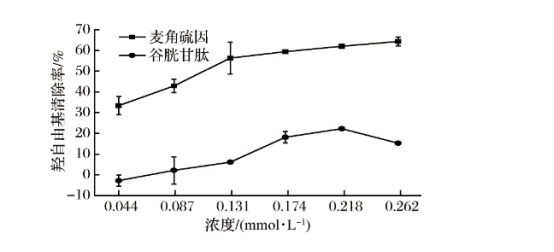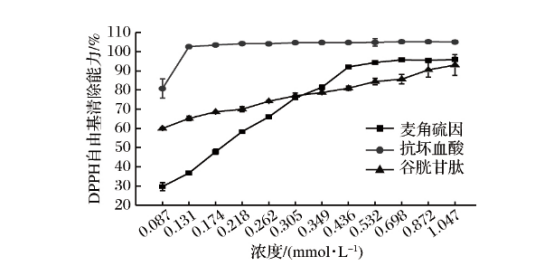Ergothioneine (natural antioxidant)-the next hot ingredient?
10/20/2025 10:29:26
Ergothioneine (EGT) is a rare natural chiral amino acid, scientifically known as 2-mercapto-histidine-trimethylol salt, which has significant antioxidant, anti-inflammatory, cell protection, color protection and anti-ultraviolet radiation effects. It has many functions and is also a natural antioxidant. The thiol group in the molecular structure of ergothioneine will undergo a thiol-thiol resonance interconversion equilibrium, and is not easily self-oxidized under physiological pH conditions (it has a special thiol structure and a higher redox potential). It is more stable than other thiol antioxidants (such as glutathione).
Since the stability of the thiocarbonyl group is higher than that of the sulfhydryl group, the balance in the thiol-thioketone isomer structure of ergothioneine is more favorable to thioketone. Under physiological pH and strong alkaline conditions, ergothioneine mainly exists in the form of thioketone. , and thiones have thioether properties, so ergothioneine has antioxidant activity.
In 1909, Tanret C first isolated ergothioneine from the sclerotium of ergot (a fungus parasitic on rye, a grass plant). Ergothioneine is mainly synthesized by fungi, bacteria and other biological pathways in nature. Humans or animals cannot synthesize it directly and can only indirectly ingest it through food, then absorb it and accumulate it in tissues or cells (it will not be quickly metabolized or excreted in urine).
Unlike many water-soluble antioxidants, ergothioneine does not penetrate the cell membrane. Its uptake depends on a special transporter protein, OCTN1. OCTN1 exists in the keratinocytes and melanocytes of the skin, so skin tissue cells can easily Easy to accept, obtain and utilize ergothioneine. Ergothioneine can enter cells and mitochondria through the transporter protein OCTN-1 on the cell membrane and mitochondrial membrane, directly eliminate reactive oxygen free radicals, and play an antioxidant and mitochondrial protective role. Studies have shown that the antioxidant properties of ergothioneine are mainly manifested in: metal cation chelator; it is a powerful scavenger of hydroxyl free radicals, hypochlorous acid, and peroxynitrite, and can remove singlet oxygen and hydrogen peroxide. . Zhu Benzhan et al. studied the effects of ergothioneine on copper-induced oxidative damage to DNA and proteins. Experimental method: Two copper-containing reaction systems were used: Cu(II)/ascorbic acid system and Cu(II)/H2O2 system. Oxidative damage to DNA and BSA was detected by DNA strand breaks and protein carbonylation, respectively. The results showed that in both copper-containing reaction systems, ergothioneine could significantly protect DNA and proteins from oxidative damage, and this protective effect was dose-dependent. Conclusion: Ergothioneine is a natural sulfur-containing antioxidant that can effectively inhibit the oxidation of biological macromolecules by copper ions by forming a non-redox active ergothioneine-copper complex. Oxidative damage. Wang Yan et al. studied the in vitro antioxidant capacity of ergothioneine in Pleurotus eryngii and compared it with glutathione and VC.

The maximum scavenging rate of 0.262 mmol/L glutathione hydroxyl radical was only 22.2%, while that of ergothioneine was up to 64.26%, indicating that the scavenging ability of ergothioneine in Pleurotus eryngii was stronger than that of Glutathione, and it is positively correlated with the amount of addition.

The DPPH free radical scavenging capacity of ergothioneine in Pleurotus eryngii was always between ascorbic acid and glutathione at 0.349-0.872 mmol/L, and when the concentration increased to 0.523-1.047 mmol/L, the DPPH free radical scavenging capacity of ergothioneine was higher than that of ascorbic acid and glutathione. The base scavenging capacity is stable at around 96%.
At the concentration of 0.087-0.349 mmol/L, the ABTS free radical scavenging ability of ergothioneine in Pleurotus eryngii was always between ascorbic acid and glutathione.
Conclusion: Compared with ascorbic acid and glutathione, the antioxidant activity of Pleurotus eryngii ergothioneine showed the strongest scavenging ability of hydroxyl radicals (·OH) at the same addition amount, which was between the two. The DPPH free radical scavenging ability is strong, and the ABTS free radical scavenging ability is weak.





